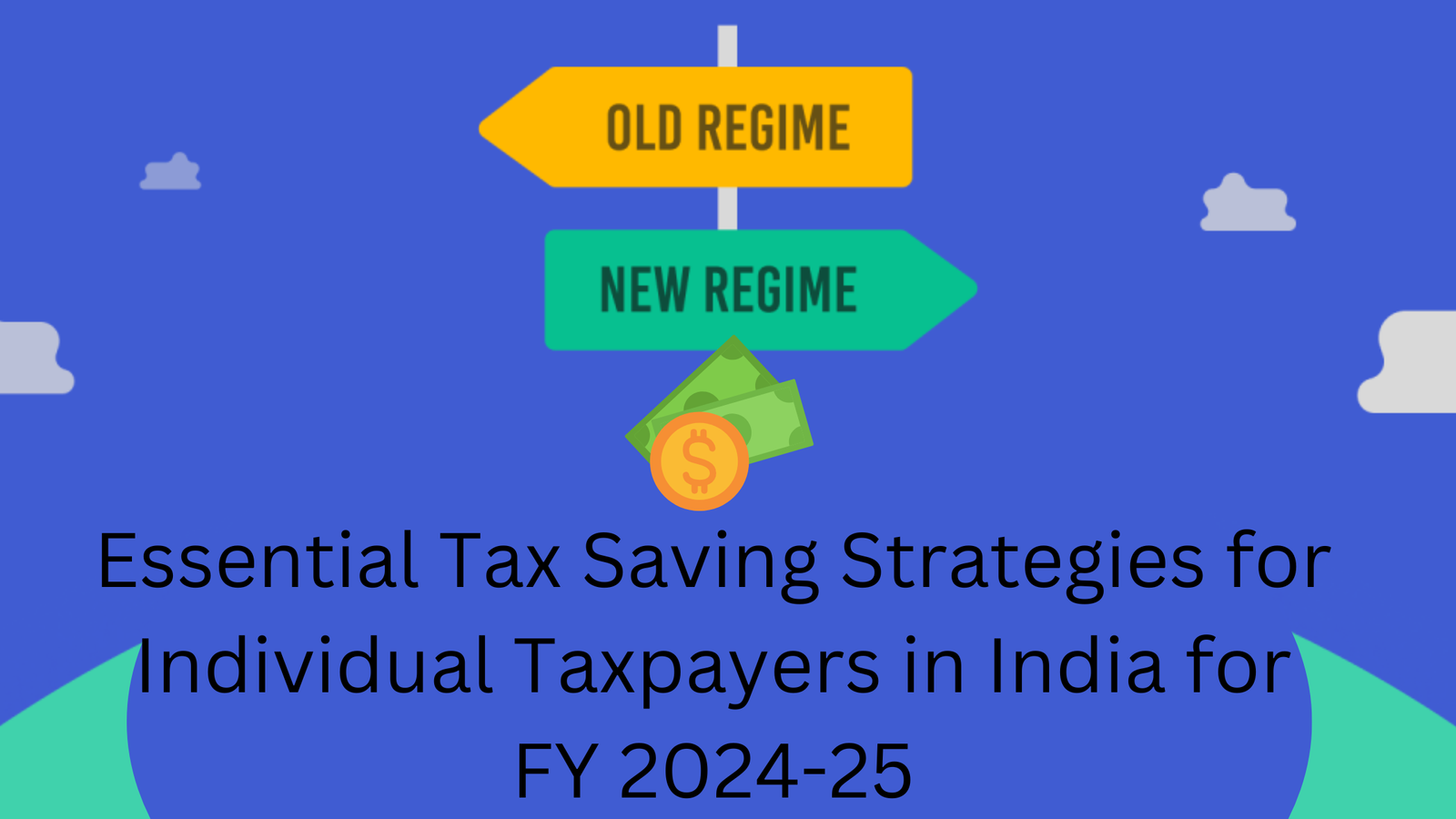Tax season in India can be a time of both anticipation and anxiety. However, with careful planning and a proactive approach, you can significantly reduce your tax liability and maximize your tax savings. This article will delve into some of the most effective tax-saving strategies available to individual taxpayers in India for the financial year 2024-25 (Assessment Year 2025-26).
Understanding the Indian Tax System
Before we dive into specific strategies, it’s crucial to understand the basic framework of the Indian income tax system. Currently, taxpayers have the option to choose between two tax regimes:
- Old Tax Regime: This regime offers numerous deductions and exemptions under various sections of the Income Tax Act, allowing for significant tax savings.
- New Tax Regime: This regime offers lower tax rates but with limited deductions and exemptions.
Choosing the Right Tax Regime
The choice between the old and new tax regimes depends heavily on individual circumstances, such as income level, investment patterns, and overall financial goals.
-
Consider the New Regime if:
- Your income is relatively high and you don’t have significant investments or eligible deductions.
- You prefer a simpler tax calculation with fewer complexities.
-
Consider the Old Regime if:
- You have substantial investments in tax-saving instruments.
- You incur significant eligible expenses like medical premiums, home loan interest, or tuition fees.
- You have multiple sources of income.
Key Tax-Saving Strategies under the Old Tax Regime
-
Section 80C: This section offers a deduction of up to ₹1,50,000 on investments in various instruments, including:
- Public Provident Fund (PPF): A long-term government-backed investment option with attractive interest rates and tax benefits.
- Employee Provident Fund (EPF): Contributions made by both the employer and employee to the EPF account are eligible for deduction.
- Equity Linked Savings Schemes (ELSS): These are mutual fund schemes that invest primarily in equities. They offer tax benefits and have a relatively short lock-in period of three years.
- Life Insurance Premiums: Premiums paid towards life insurance policies are eligible for deduction up to certain limits.
- Tuition Fees: Payments made towards the tuition fees of children are deductible.
- Principal Repayment of Home Loans: Deduction is available on the principal repayment of home loans taken for self-occupation or renting purposes.
- National Savings Certificates (NSC): These are government-backed securities with a fixed maturity period and attractive interest rates.
-
Section 80D: This section provides deductions for health insurance premiums paid for self, family, and parents.
-
Section 80E: Deduction is available on interest paid on education loans taken for higher education.
-
Section 80G: Donations made to eligible charitable institutions can be claimed as a deduction.
-
Home Loan Interest Deductions:
- Section 24: Deduction is available on interest paid on home loans taken for self-occupied or rented properties.
- Section 80EE: First-time homebuyers can claim an additional deduction on interest paid on home loans.
Tax-Saving Strategies under the New Tax Regime
While the new tax regime offers limited deductions, some tax-saving options still exist:
- Standard Deduction: A standard deduction is available to all taxpayers, irrespective of their income level.
- Deduction for Medical Expenses: Deductions are available for medical expenses incurred for self, family, and parents.
- Deduction for Disability: Deductions are available for expenses incurred on the medical treatment of persons with disabilities.
Other Important Considerations
- Investments in Retirement Plans: Consider investing in retirement plans such as the National Pension System (NPS) to secure your future and avail tax benefits.
- Tax-Efficient Portfolio Allocation: Diversify your investments across various asset classes to optimize returns and minimize tax liabilities.
- Stay Updated: Tax laws and regulations are subject to change. Stay informed about the latest updates and amendments to ensure you are maximizing your tax savings.
Disclaimer: This article is for informational purposes only and should not be construed as financial or tax advice. It is essential to consult with a qualified tax professional or financial advisor to understand your specific tax situation and make informed decisions.
Conclusion
By carefully analyzing your financial situation, understanding the available tax-saving options, and implementing a well-defined tax-planning strategy, you can significantly reduce your tax liability and achieve your financial goals more effectively. Remember to regularly review your tax-saving strategies to ensure they align with your evolving financial circumstances and take advantage of the latest tax benefits available to you.

